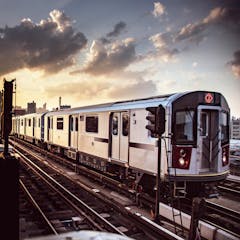
Articles on Traffic congestion
Displaying 1 - 20 of 65 articles

Support for road-user charging strengthens when people are assured that revenue goes into reducing traffic congestion, maintaining transport infrastructure, improving public transport.

Early in the pandemic, when there was much less traffic on the roads, people took to their bikes. But since then, fewer people are cycling, with rates now lower than in 2011.

LTNs were introduced to UK cities to create a more pleasant environment for pedestrians and cyclists - but they’ve become controversial.

Bus rapid transit is more than a way to get thousands of people to the game. Used in cities globally as an alternative to light rail, it can be a cost-effective way to transform cities for the better.

Public buses, subways and trains are relatively safe, fast and cheap. But competition from rideshares and concerns over COVID-19 will soon see some local agencies short of funds.

London was rated 2021’s most congested city.

Until train use recovers, a new approach to rail funding is needed.

Apps are telling us how to get around our cities faster. But if each person acts only in their own interest, society at large gets stuck in traffic.

Cyclists in Melbourne are less likely than those in Dublin or Seville to ride in the rain. Understanding why is crucial.

Transit agencies could use the money to buy new subway cars, buses and maintain rails. The funding is designed to build on last year’s emergency aid, which kept transit operating through the pandemic.

The inability to curb road accidents in Ghana is tied to colonial and neocolonial legacies.

The benefits of road-user charging are now well established. And including electric vehicles doesn’t have to be a deterrent to their uptake, as New Zealand and other nations have shown.

Electric vehicles would lower emissions, but if their lower running costs lead to increased car use that creates a whole lot of other costs for our cities.

COVID led to commuting time savings worth over $2,000 a year for each driver and $5,000 per public transport user. But as workplaces reopen, we may need road user charges to keep traffic flowing.

Motorways were once seen as a way of reducing congestion in our towns and cities. But the more we build, the more they fill with drivers.

First trains, then cars and, now, COVID-19 have all spurred New York to reimagine how its scarce space should be used – and what residents need to survive.

As COVID-19 restrictions are eased, cities face crippling congestion if people shun crowded public transport. More frequent and faster services, using innovations like pop-up bus lanes, can avoid this.

Some new habits we’ve seen emerging during the pandemic could help us solve tricky problems like traffic congestion, which have challenged our cities for a long time.

The sweeping introduction of driverless cars could see more vehicles on the road, driving longer distances. But smart planning could solve some of transit-associated environmental and social problems.

Faced with the eye-watering costs of building infrastructure, it makes sense to turn to much more cost-effective smart technology to get traffic flowing.
